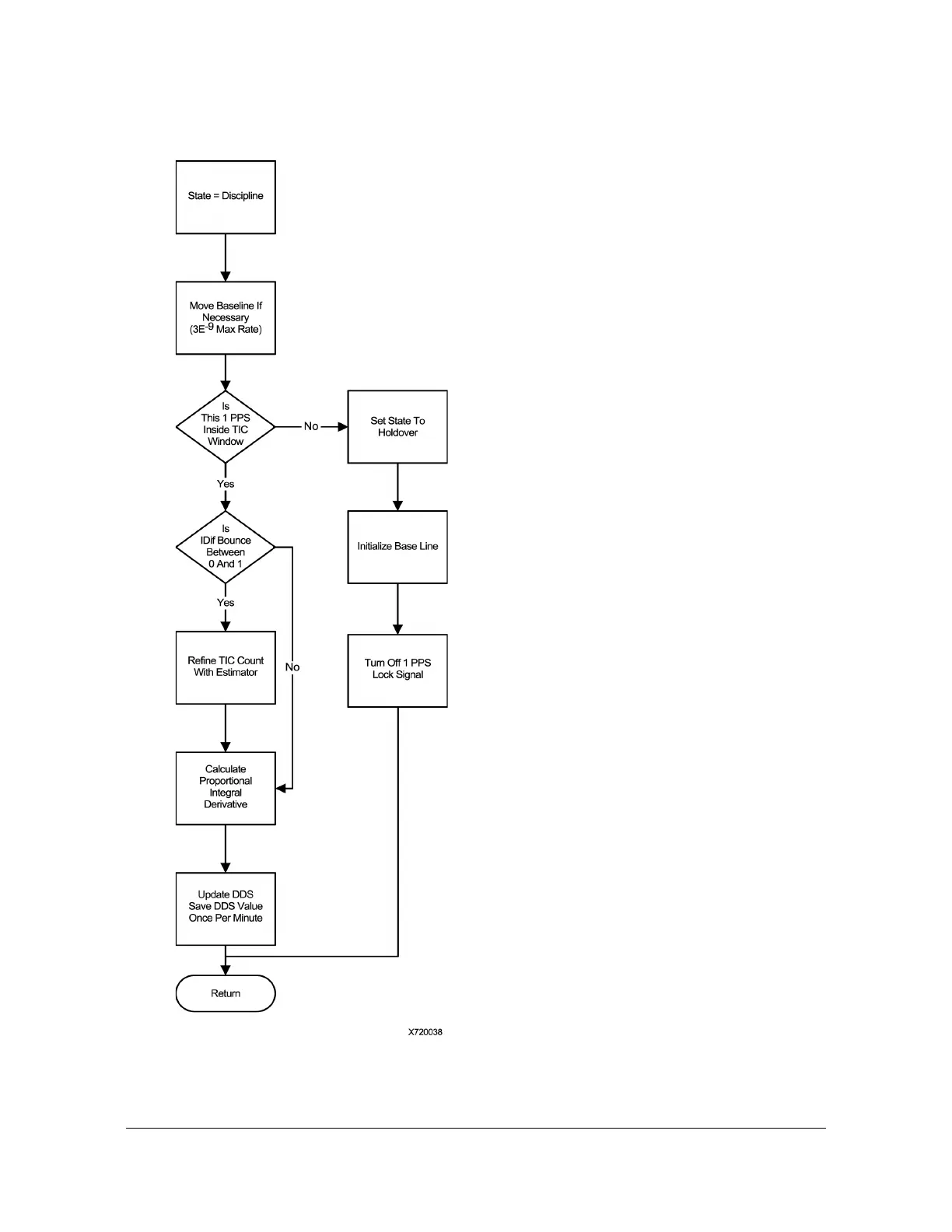097-10603-01 Rev. A – November 2004 X72 Desiger’s Reference and User’s Guide 93
X72 1PPS Algorithm Theory of Operation
Discipline
Figure D-10 X72 Discipline State
In the Discipline State, the X72 uses a PID
(proportional-integral-derivative) method to
steer the 1PPS output of the X72. This
method means the X72 average frequency
offset is close to zero. You can expect to see
some frequency change when recovering
from holdover.
If at any time a 1PPS input signal is more
than 330 nanoseconds from its expected
value the 1PPS algorithm returns to holdover
state.
If the input source is very stable, the X72
further refines the input estimate to provide a
smoother frequency output.
Every minute the X72 saves the DDS setting
in case holdover occurs. Since some
receivers take a long time to produce 330
nanoseconds of error after signal loss, the
X72 reverts to the DDS value from 2 periods
before the 1PPS becomes invalid.

